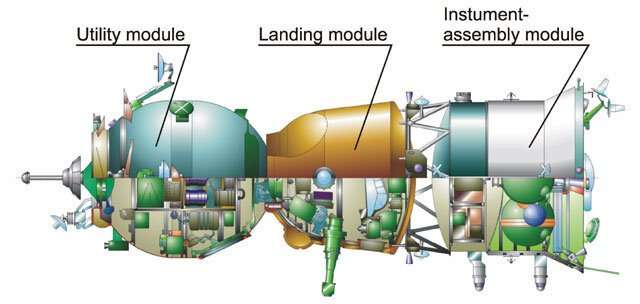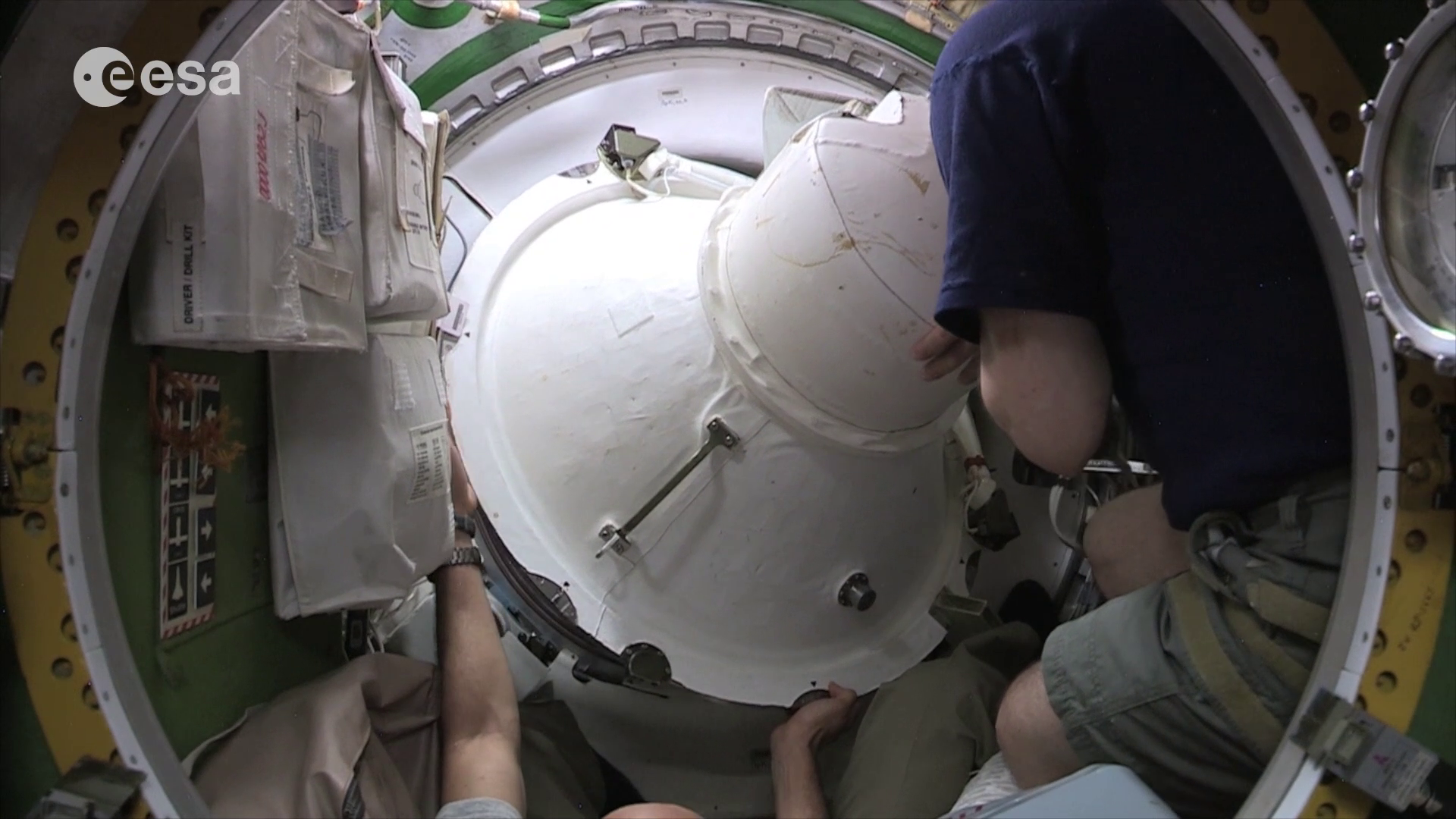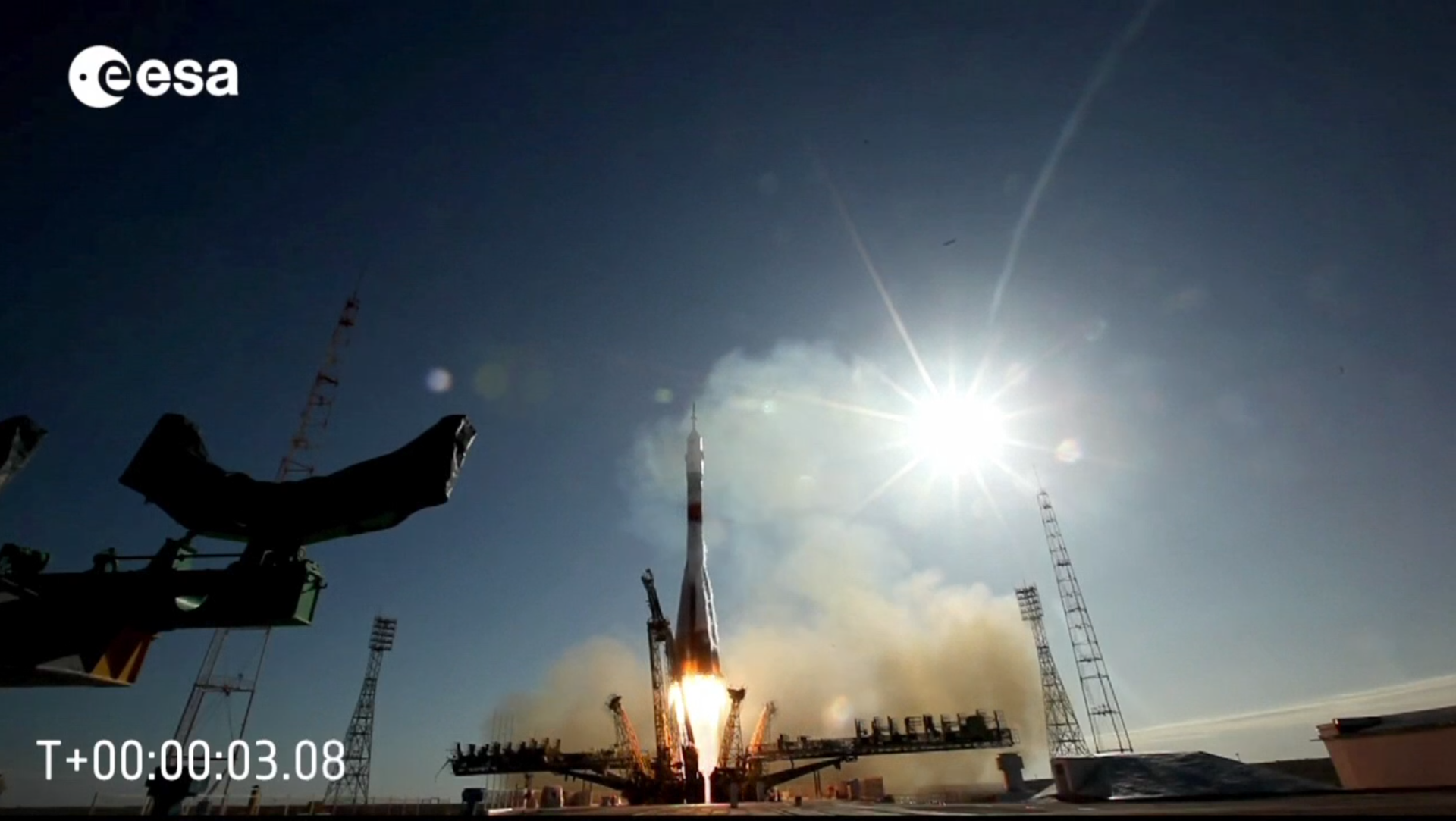Getting to space

Easing from the grasp of Earth’s gravity is no easy feat. Humans dreamed of going to the stars for centuries, but it took until 1961 for Yuri Gagarin to become the first human to orbit our planet.
When ignited, the Soyuz launcher delivers mind-boggling power to escape the clutches of Earth’s gravity and provide a cruising speed of 28 800 km/h.
Within 10 minutes of rising from the pad, the astronauts inside travel over 1640 km and gain 210 km altitude. Every second for nine minutes, their spacecraft accelerates 50 km/h on average.
The current generation Soyuz designated 'MS' shares its name with the Soyuz launcher, which means ‘union’ in Russian. The ‘MS’ denotes the most recent update to the fourth generation of this long-serving spacecraft. It stands for Modified Systems, with many smaller technological upgrades to make the spacecraft lighter and more modern. For example halogen lights have been replaced with LEDs and newer and larger solar panels to increase power generation.

The Soyuz flights to the International Space Station also use a different numbering system followed by an 's', Soyuz 49s would be the 49th crewed launch to the International Space Station.
Astronauts wear Sokol suits that offer protection in an emergency. They are designed for the Soyuz sitting position, which is why astronauts look so hunched over as they walk to their rocket.

Depending on time of launch and orbits of the Space Station a trip on a Soyuz can take around six hours or two days while orbiting Earth 34 times.
Soyuz carries a module on top of the crew section to serve as living quarters enroute to the Station. Naturally, a toilet is included.


Access the video


